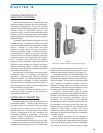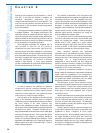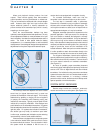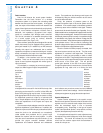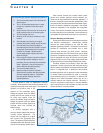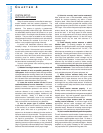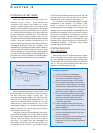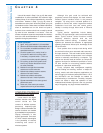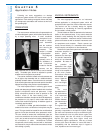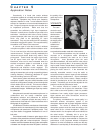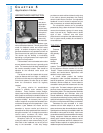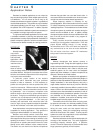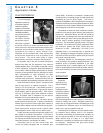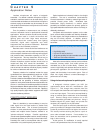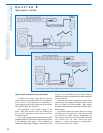
TROUBLESHOOTING WIRELESS
MICROPHONE SYSTEMS
Even when wireless microphone systems appear to be
properly selected and set up, problems may arise in
actual use. While it is not practical here to offer
comprehensive solutions for all possible situations some
general guidelines are suggested.
Though problems with wireless microphone systems
eventually show up as audible effects these effects can be
symptoms of audio and/or radio problems. The object of
troubleshooting in either situation is first to identify the source
of the problem and second to reduce or eliminate the problem.
The following abbreviations are used in these charts:
AF-audio frequency, RF-radio frequency, RFI-radio
frequency interference, TX-transmitter, RCV-receiver
A common symptom in multiple system operation is
apparent activation of two receivers by a single transmitter.
This can be due to one of several causes: operating
frequencies the same or too close, crystal harmonics,
transmitter at the image frequency of the second receiver, IM
with an unknown source, etc. If activating the second
transmitter results in proper operation of both systems this
effect can usually be ignored. Recommended operating
procedure is to turn up a receiver only when its transmitter is
active. If it is desired to allow open receivers without
transmitters, readjusting the squelch settings may suffice.
Otherwise the operating frequencies may have to be changed.
45
Selection
and Operation
of Wireless Microphone Systems
C HAPTER 4
TROUBLESHOOTING GUIDE
Conditions: TX on, RCV on, single system
Symptom TX - RCV Possible cause Action
Distance
No AF signal and no RF signal any low TX battery voltage replace battery
No AF signal and no RF signal any TX and RCV tuned to retune one or both units
different frequencies
No AF signal and no RF signal average multipath dropout use diversity RCV or reposition TX
and/or RCV
No AF signal and no RF signal long out of range move TX closer to RCV
No AF signal but normal RF signal any TX muted un-mute TX
No AF signal but normal RF signal any microphone or other input source check input source
Distortion with no AF peak indication any low TX battery voltage replace battery
Distortion with AF peak indication any excessive TX input level decrease source level or TX input level
Distortion with AF peak indication in any excessive RCV output level decrease RCV output level
subsequent equipment
Noise with low AF signal and normal RF signal any insufficient TX input level increase source level or TX input level
Noise with low AF signal and normal RF signal any strong RFI identify source and eliminate, or change
frequency of wireless microphone system
Noise with normal AF signal and low RF signal average moderate RFI increase squelch setting until RCV mutes
Noise with normal AF and RF signals any very strong RFI identify source and eliminate, or change
frequency of wireless microphone system
Intermittent AF signal and low RF signal long out of range move TX closer to RCV
Intermittent AF signal and low RF signal long insufficient antenna gain use higher gain antenna
Intermittent AF signal and low RF signal long excessive antenna cable loss use low loss cable and/or less cable
Intermittent AF and RF signals average multipath interference use diversity RCV or reposition TX
and/or RCV
Intermittent AF and RF signals average obstructions in signal path remove obstructions or reposition TX
and/or RCV
Intermittent AF and RF signals average squelch set too high decrease squelch setting
Intermittent AF and RF signals average very strong RFI identify source and eliminate, or change
frequency of wireless microphone system
When multiple systems are in use some additional problems can occur due to interaction between the systems. Turning individual systems
on and off and trying systems in different combinations can help to pinpoint the cause. However, this can become much more difficult as the
number of systems increases.
Following are some multiple system troubleshooting suggestions for symptoms observed when all systems are active.
Conditions: TX on, RCV on, multiple systems
Symptom Distance Possible cause Action
Distortion on two (or more) systems with no any units on same frequency change frequencies
AF peak indication
Distortion on one (or more) systems with no TX-TX short TX + TX intermod change frequencies
AF peak indication
Distortion on one (or more) systems with no TX-TX short TX + TX intermod increase TX to TX distance
AF peak indication TX-RCV short TX + TX + RCV intermod change frequencies
Distortion on one (or more) systems with no TX-RCV short TX + TX + RCV intermod increase TX to RCV distance
AF peak indication



